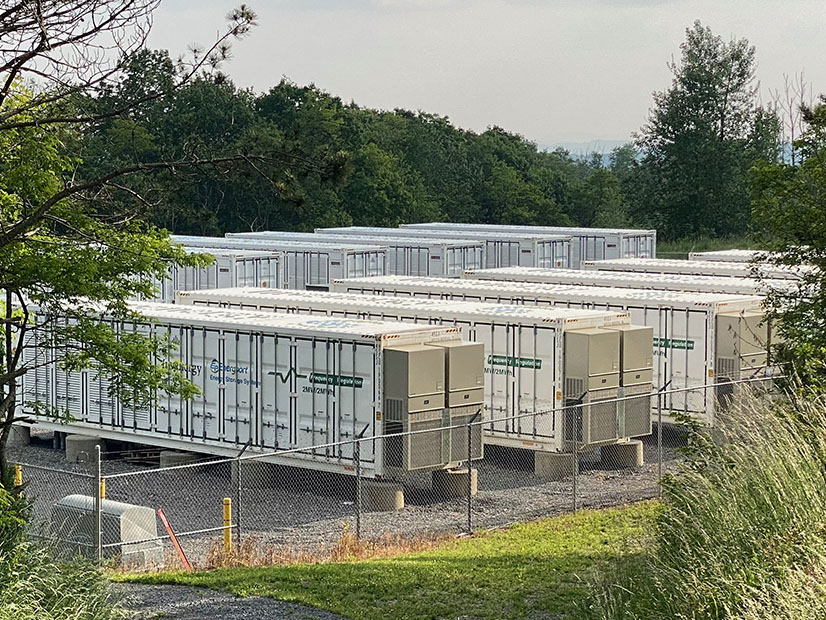NYISO presented its draft recommendations for the demand curve reset Aug. 1, including the choice of a two-hour battery electric storage system resource as the proxy unit in calculations.
The ISO said it agreed with the findings of Analysis Group, even after some stakeholders — mostly generators — opposed the choice. (See NYISO Stakeholders Continue Debate over Battery as Proxy Unit.)
The presentation to the Installed Capacity Working Group was proceeded by a long discussion of various financial parameters employed by NYISO’s consultants.
“Hopefully I don’t need to cover this,” said Zach Smith, senior manager of capacity and new resource integration market solutions for NYISO, referencing a background slide. “We just spent the past two hours talking about” it.
Smith said that NYISO staff concurred with the recommendations of Analysis Group. Based on the data analyzed so far, a 200-MW, two-hour lithium battery storage system is the technology that represents the highest variable and lowest fixed cost for all zones in New York.
“There are a couple of areas we are continuing to investigate, to sharpen our pencils on,” Smith said. “The first is an assessment of the capital parameters for the battery storage option. … We are also looking at the appropriate derating factor for battery energy storage.”
Smith added that NYISO was looking at the appropriate indices and weightings used for updating the cost of new entry.
Doreen Saia, a lawyer with Greenberg Traurig, said she was unsure how well Analysis Group captured the risk portfolio of the two-hour battery as compared to other storage options. Earlier she said she believed the analysis was “too aggressive” on an eight-hour battery but not aggressive on the two-hour.
“While I’m not conflating capacity accreditation factors with this, from a risk perspective, I think you have to project or assume or presume that investors are going to see that distinction and manage it with a risk assessment,” Saia said. “I think that’s where the train fell off the tracks a little.”
Other stakeholders seemed concerned about the derating factor for energy storage. Derating factors measure the availability or performance of specific resources. They are combined with duration adjustment factors to account for a resource’s capacity accreditation.
Smith outlined a problem with the derating factor for the two-hour battery. Analysis Group and its consulting partners, 1898 and Co., recommended a 2% derating factor. However, NYISO’s ICAP Manual establishes that the initial derating factor for new classes of energy storage entering the capacity market is set to the NERC class average of pumped hydro storage, 9%.
“There is a potential misalignment between the assumed proxy EFORd [equivalent forced outage rate – demand] value for energy storage directed by the ICAP Manual versus the potential operating performance anticipated for such resources,” said Smith. “We are continuing to evaluate what the appropriate derating factor should be for battery energy storage systems in the demand curve reset.”
“You’re acknowledging that there’s a problem,” said Mark Younger, president of Hudson Energy Economics. “But you have not committed yet to fixing the problem.”
“We are committed to investigating the problem,” Smith answered. “I don’t know what the solution to the problem is, but we will have a resolution to it.”
Smith went on to say that NYISO would work with Analysis Group to investigate the appropriateness of the composite escalation factor methodology in the indices used for determining the gross CONE. Composite escalation factors combine inflation and potential market shifts to try to estimate the future cost of longer-term projects.
“Despite our best efforts, which everyone seems to be having including the state in their contracting efforts, the issue of how to manage escalation has taken on a life on its own. … It’s cumbersome and unmanageable,” said Saia.
Smith said that NYISO was still soliciting feedback and it would post the comments received. It will post the final staff recommendations Sept. 5. The final reports from NYISO and the consultants will then be posted on Sept. 19 and referred to the Board of Directors for approval. Final stakeholder comments for the board should be filed by Oct. 9.
The ISO is required to file a proposal with FERC by Nov. 30.
“Then I’m going to take a vacation,” Smith said.



